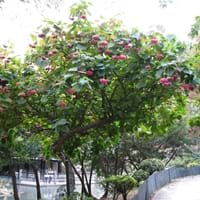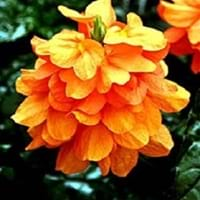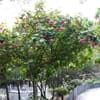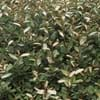Life Span
Perennial
Annual and Perennial
Origin
Eastern Africa, Madagascar
Southeastern Asia, India
Types
Not Available
Not Available
Habitat
gardens, Screen Cottage and Informal Garden
gardens, Homesteads, Urban areas
USDA Hardiness Zone
9-15
10-15
Sunset Zone
H1, H2, 22, 23, 24
H1, H2, 24
Habit
Oval or Rounded
Upright/Erect
Flower Color
Pink, Hot Pink, Magenta, Rose
Orange, Light Yellow, Peach, Orange Red
Flower Color Modifier
Not Available
Not Available
Fruit Color
Not Available
Non Fruiting Plant
Leaf Color in Spring
Green, Light Green
Green, Dark Green
Leaf Color in Summer
Green
Green, Dark Green
Leaf Color in Fall
Green
Green, Dark Green
Leaf Color in Winter
Green
Green, Dark Green
Plant Season
Spring, Winter
Spring, Summer, Fall, Winter
Sunlight
Full Sun, Partial Sun
Full Sun, Partial Sun
Type of Soil
Loam, Sand
Loam
The pH of Soil
Acidic, Neutral
Acidic, Neutral
Soil Drainage
Well drained
Average
Bloom Time
Early Spring, Spring, Winter, Late Winter
Indeterminate
Repeat Bloomer
Not Available
Yes
Tolerances
Drought
Not Available
Where to Plant?
Ground, Pot
Ground, Pot
How to Plant?
Semi-hardwood and hardwood cuttings, Stem Cutting
Seedlings
Plant Maintenance
Medium
Medium
Watering Requirements
Average Water Needs, Do Not over Water, Requires regular watering
Form a Soil ring to water efficiently, Keep ground moist, Requires watering in the growing season, Water more in summer
In Summer
Lots of watering
Lots of watering
In Spring
Moderate
Moderate
In Winter
Average Water
Average Water
Soil pH
Acidic, Neutral
Acidic, Neutral
Soil Type
Loam, Sand
Loam
Soil Drainage Capacity
Well drained
Average
Sun Exposure
Full Sun, Partial Sun
Full Sun, Partial Sun
Pruning
Remove damaged leaves, Remove dead branches, Remove dead leaves
No pruning needed in the early stages, Remove damaged leaves, Remove dead leaves, Remove deadheads
Fertilizers
All-Purpose Liquid Fertilizer
All-Purpose Liquid Fertilizer
Pests and Diseases
Red blotch
Insects
Plant Tolerance
Drought
Drought
Flower Petal Number
Not Available
Single
Foliage Texture
Coarse
Medium
Foliage Sheen
Not Available
Glossy
Attracts
Butterflies
Hummingbirds, Butterflies
Allergy
Not Available
no allergic reactions
Aesthetic Uses
Cottage Garden, Formal Garden, Showy Purposes
Beautification, Showy Purposes
Beauty Benefits
Not Available
Not Available
Environmental Uses
Air purification
Air purification
Medicinal Uses
Not Available
Cold, Cough, Wounds
Part of Plant Used
Flowers
Flowers
Other Uses
Dried heads are used in floristry, Grown for shade
Used as Ornamental plant
Used As Indoor Plant
No
Yes
Used As Outdoor Plant
Yes
Yes
Garden Design
Hedges, Mixed Border, Screening, Wind Break, Tropical
Bedding Plant, Container, Feature Plant, Hedges, Mixed Border, Tropical
Botanical Name
DOMBEYA wallichii
CROSSANDRA infundibuliformis
Common Name
Pinkball, Pink ball tree, Tropical hydrangea
Firecracker Flower
In Hindi
Pink Ball Tree
आबोली
In German
Pink Ball Tree
Kracher-Blume
In French
Pink Ball Tree
Firecracker fleur
In Spanish
Pink Ball Tree
flor petardo
In Greek
Pink Ball Tree
πυροτέχνημα λουλούδι
In Portuguese
Pink Ball Tree
flor foguete
In Polish
Dombeja Wallicha
petarda kwiat
In Latin
Pink Ball Tree
flos Firecracker
Phylum
Tracheophyta
Not Available
Class
Magnoliopsida
Not Available
Family
Sterculiaceae
Acanthaceae
Clade
Angiosperms, Eudicots, Rosids
Angiosperms, Asterids, Eudicots
Tribe
Not Available
Not Available
Subfamily
Dombeyoideae
Brodiaeoideae
Number of Species
Not Available
Properties of Pink Ball Tree and Firecracker Flower
Wondering what are the properties of Pink Ball Tree and Firecracker Flower? We provide you with everything About Pink Ball Tree and Firecracker Flower. Pink Ball Tree doesn't have thorns and Firecracker Flower doesn't have thorns. Also Pink Ball Tree does not have fragrant flowers. Pink Ball Tree has allergic reactions like Not Available and Firecracker Flower has allergic reactions like Not Available. Compare all the properties and characteristics of these two plants. Find out which of these plant can be used as indoor plant. If you are interested to decorate your house and garden, find out aesthetic uses, compare them and select the plant which will beautify your surrounding. Along with beautification, try comparing medicinal and edible uses of Pink Ball Tree and Firecracker Flower and you can choose the plant having best and most benefits.
Season and Care of Pink Ball Tree and Firecracker Flower
Season and care of Pink Ball Tree and Firecracker Flower is important to know. While considering everything about Pink Ball Tree and Firecracker Flower Care, growing season is an essential factor. Pink Ball Tree season is Spring and Winter and Firecracker Flower season is Spring and Winter. The type of soil for Pink Ball Tree is Loam, Sand and for Firecracker Flower is Loam while the PH of soil for Pink Ball Tree is Acidic, Neutral and for Firecracker Flower is Acidic, Neutral.
Pink Ball Tree and Firecracker Flower Physical Information
Pink Ball Tree and Firecracker Flower physical information is very important for comparison. Pink Ball Tree height is 550.00 cm and width 240.00 cm whereas Firecracker Flower height is 40.60 cm and width 25.40 cm. The color specification of Pink Ball Tree and Firecracker Flower are as follows:
Pink Ball Tree flower color: Pink, Hot Pink, Magenta and Rose
Pink Ball Tree leaf color: Green and Light Green
Firecracker Flower flower color: Orange, Light Yellow, Peach and Orange Red
- Firecracker Flower leaf color: Green and Dark Green
Care of Pink Ball Tree and Firecracker Flower
Care of Pink Ball Tree and Firecracker Flower include pruning, fertilizers, watering etc. Pink Ball Tree pruning is done Remove damaged leaves, Remove dead branches and Remove dead leaves and Firecracker Flower pruning is done No pruning needed in the early stages, Remove damaged leaves, Remove dead leaves and Remove deadheads. In summer Pink Ball Tree needs Lots of watering and in winter, it needs Average Water. Whereas, in summer Firecracker Flower needs Lots of watering and in winter, it needs Average Water.





